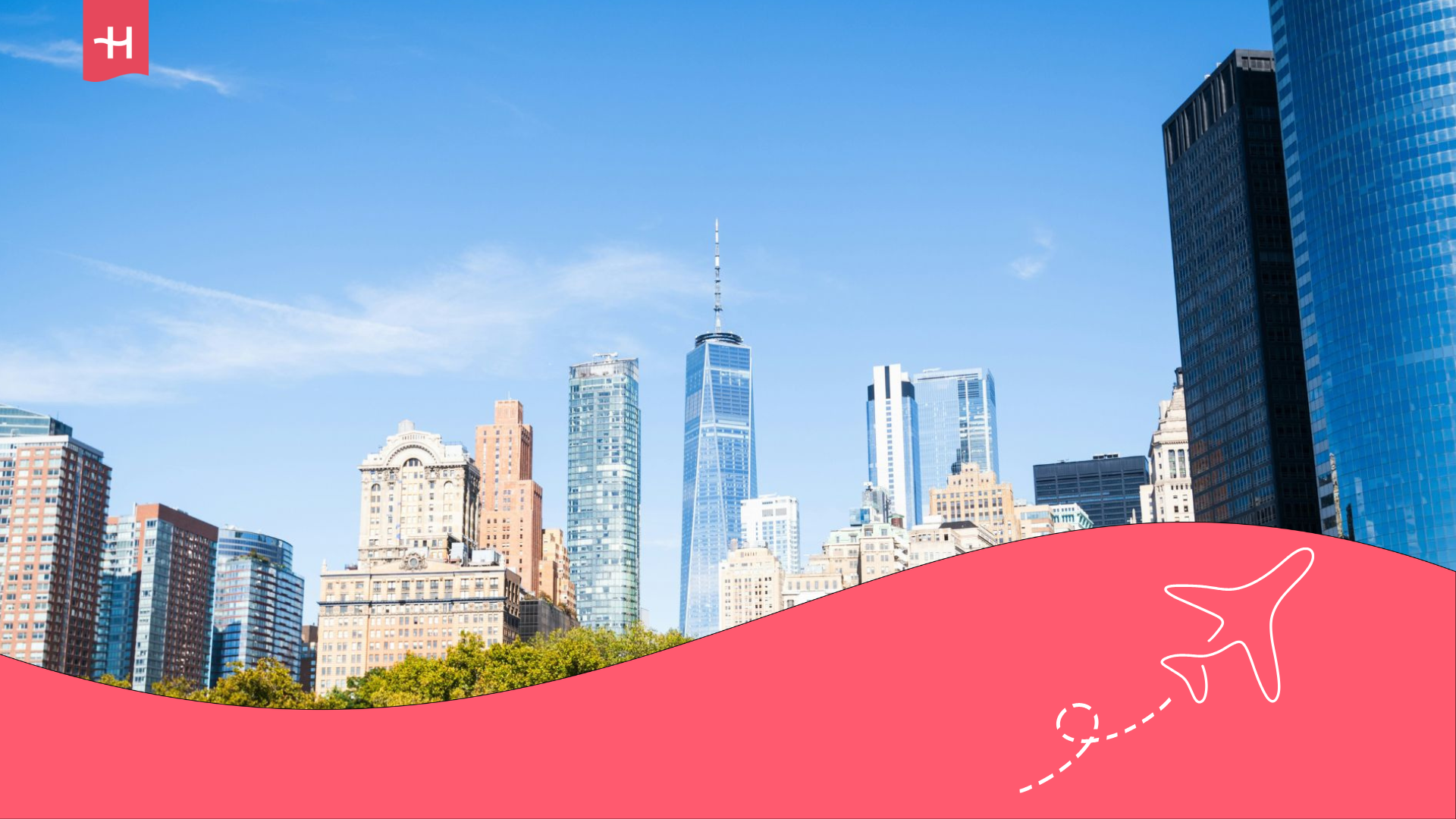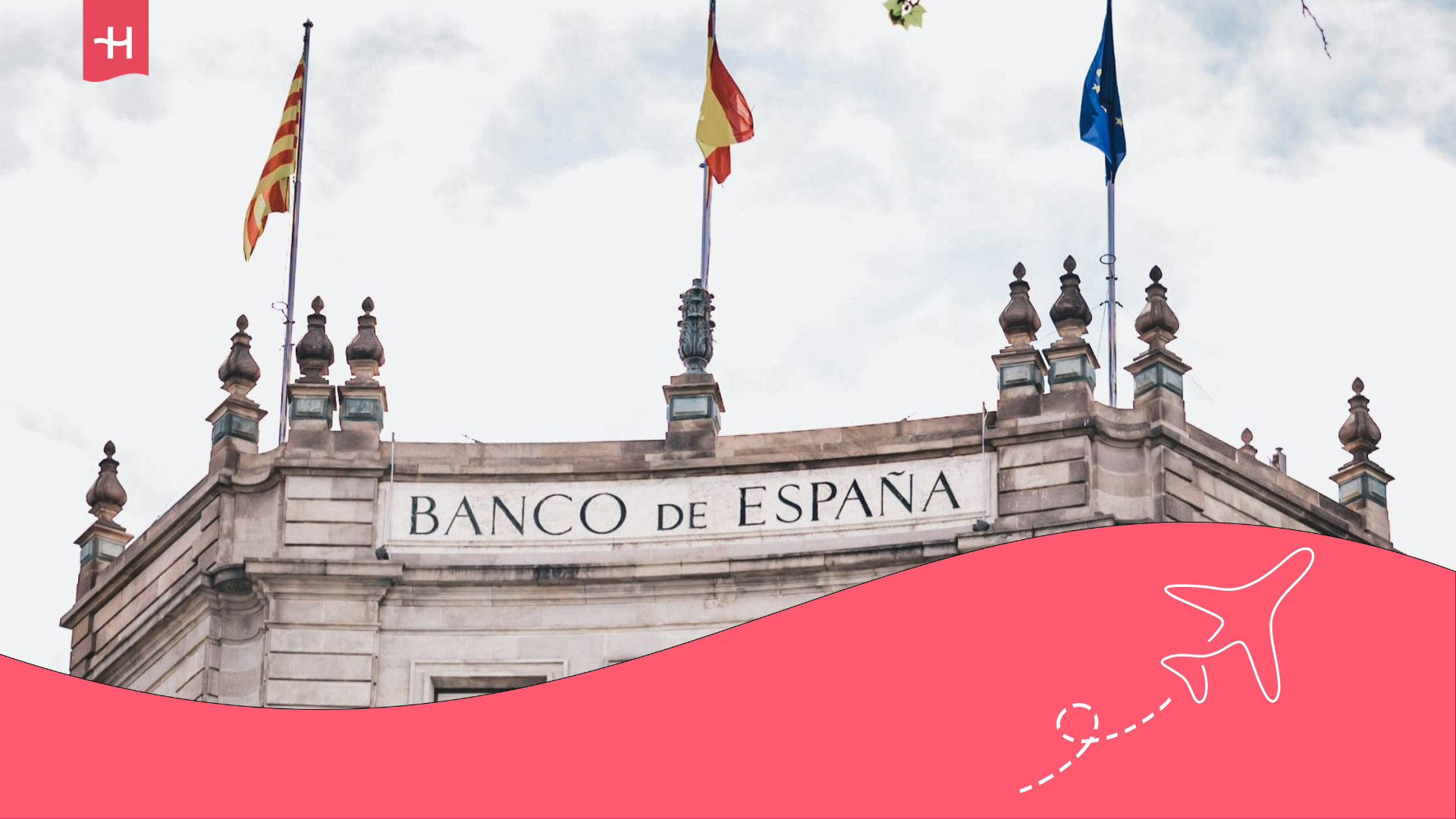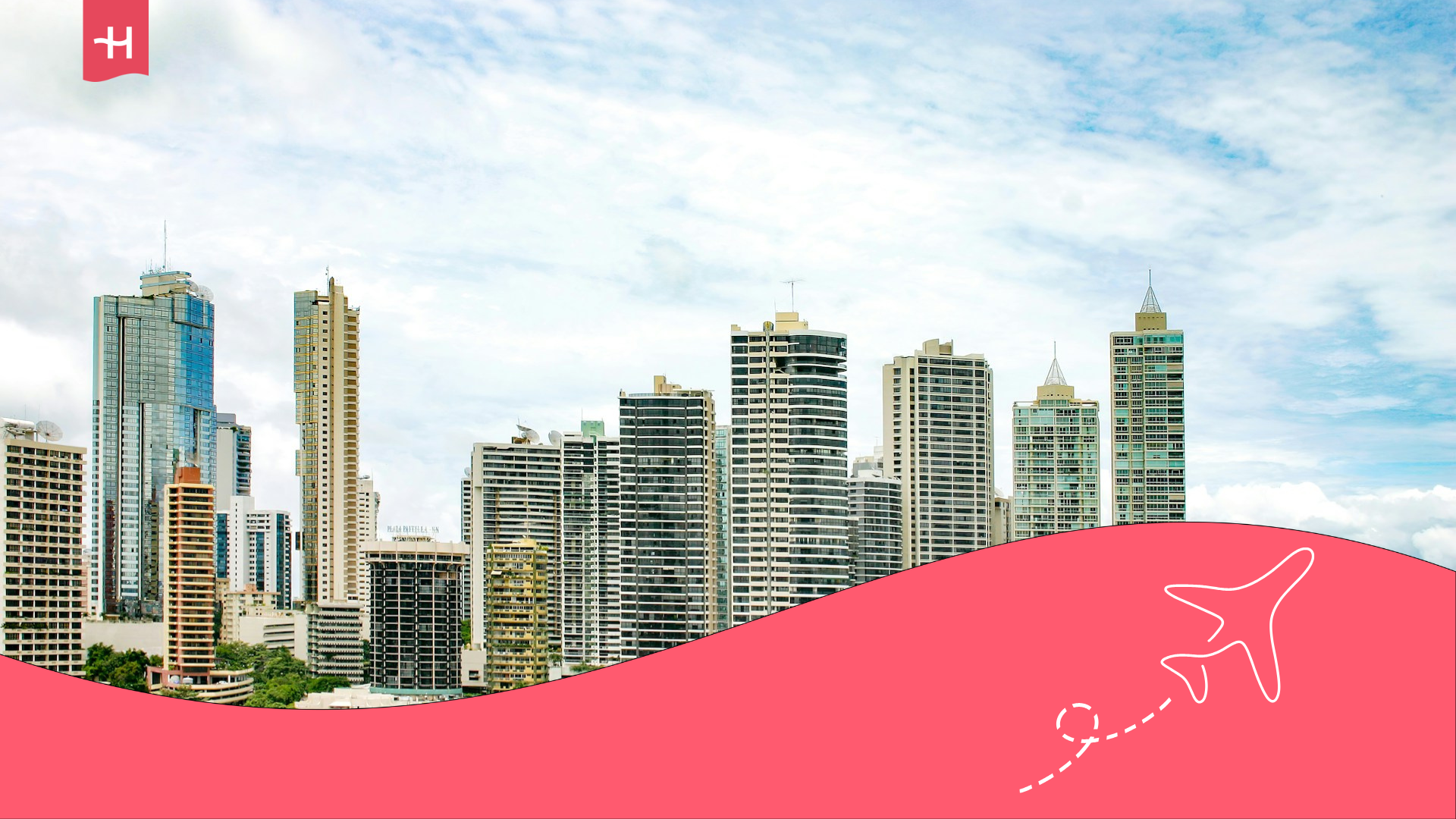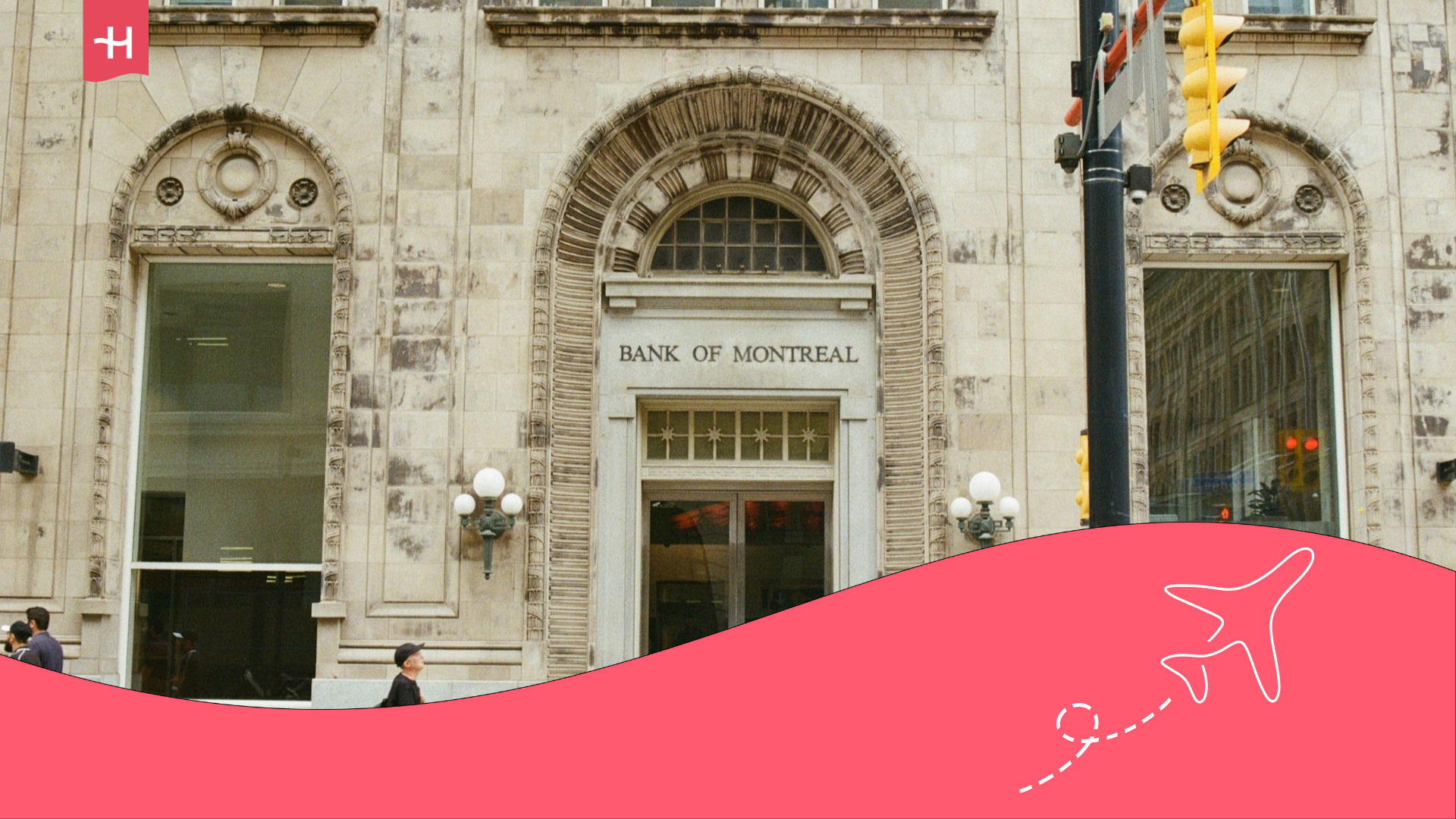Cost of living in the Philippines: Food, transport, and more
If you are planning to move to or spend time in the Philippines, you should be aware of the cost of living in the country, so take note because we will tell you everything you need to know here.
The cost of living in the Philippines is the most important factor you must consider if you plan a short or long stay.
The Asian country surely attracts with its beaches and rich culture. That’s why we’ve prepared a basic price guide about daily expenses in the Philippines, so you can enjoy the country more.
Here you’ll discover how much different types of accommodation cost, the prices of staple foods, transport and even leisure. We’ll also show you connectivity costs, so you can pick the best internet option if you’ll work remotely during your stay in this Southeast Asian island nation.
Average cost of staying in the Philippines
The cost of accommodation in the Philippines varies depending on location, amenities and property size.
Here you’ll see your best choice, since some lodgings offer room service while others allow more independence with chores. It all depends on your taste and budget.
Average hotel costs
Filipino hotels are common accommodations for foreigners and travellers because their services make everything easier. For example, a hotel may include a restaurant, gym, coworking areas and even tours to explore the city or town.
Also, room cleaning and laundry services attract travellers who want zero worries and just enjoy their stay. So, if you want to disconnect from cooking or laundry, you can book a hotel. Here are the prices in some main cities:
| City | Average cost per night in USD and EUR |
| Manila (capital) | Between $60-110 (€52 – €94) |
| Quezon City | Between $50-100 (€42 – €85.40) |
| Cebu | Between $30-90 (€26 – €77) |
| Davao | Between $40-115 (€35 – €99) |
Average cost of Airbnb
Airbnb is also a very comfortable option to stay anywhere in the Philippines, because you’ll find a house, flat or furnished room that suits your needs best.
If you choose to rent through Airbnb, you’ll get places with furniture, kitchen items, good locations and different spaces to make yourself comfortable while you explore and dive into Filipino culture.
Here we show you the average prices for rooms and furnished homes using this app. It’s become the top choice for this type of rental, since they’re flexible, don’t demand deposits or contracts.
Instead, you can book the days you want and get support that guarantees what’s offered, while landlords ensure property care.
| City/Property | Average monthly cost of a furnished house | Average monthly cost of a furnished flat | Average monthly cost of a furnished room |
| Manila | Between $1,000-1,600 (€854 – €1,367) | Between $800-1,200 (€736 – €1,104) | Between $300-500 (€276 – €460) |
| Quezon City | Between $900-1,500 (€770 – €1,280) | Between $700-1,000 (€600 – €854) | Between $250-400 (€230 – €370) |
| Cebu | Between $900-1,300 (€770 – €1,110) | Between $500-800 (€460 – €736) | Between $200-350 (€184 – €322) |
| Davao | Between $800-1,100 (€600 – €1,012) | Between $450-700 (€414 – €644) | Between $180-300 (€166 – €276) |
Average cost of coliving
Coliving spaces in the Philippines are well designed to meet new people and work while sharing areas like kitchens, coworking spaces, terraces, lounges and dining rooms. These places aim to build community and encourage cooperation among colleagues and different professionals.
In the country you’ll find options at different prices depending on your needs. For instance, you can rent coliving by sharing a room or choosing a private one, with or without bathroom. Laundry and cleaning services are also available if you prefer.
All these amenities mean you’ll invest more or less in accommodation. The advantage of these places is meeting more people and enriching your social and professional experiences while exploring Filipino cities. Here are the prices in Cebu, Manila, Davao and Quezon City:
| City | Average monthly cost of coliving |
| Manila | Between $200-600 (€170 – €513) |
| Quezon City | Between $200-500 (€170 – €427) |
| Cebu | Between $200-500 (€170 – €427) |
| Davao | Between $200-400 (€170 – €341) |
Cost of food in the Philippines
The basic basket in the Philippines includes fish, maize and rice as the main sources of nutrition, plus other products available in different supermarkets.
To help you estimate how much you’ll spend on food while in the Philippines, here’s a price list of essential products you can buy at the popular Robinsons Supermarket.
| Essential food products in the Philippines | Average costs in USD and EUR |
| 1 kg of rice | $0.93-1.25 (€0.85 – 1.15) |
| 12 eggs | $2.05-2.23 (€1.89 – 2.05) |
| 1 L of milk | $1.75-2.50 (€1.60 – 2.30) |
| 1 kg of cheese | $5.88-8.35 (€5.40 – 7.66) |
| 500 g of bread | $1.21 (€1.11) |
| 1 kg of chicken | $3.04-5.24 (€2.79 – 4.82) |
| 1 kg of beef | $5.70-8.45 (€5.23 – 7.76) |
| 1 kg of pork | $5.36-6.25 (€4.92 – 5.74) |
| 1 kg of Bangus fish | $2.68-3.57 (€2.46 – 3.28) |
| 1 kg of mixed vegetables (pechay, carrots, potatoes, tomato, onion, okra, aubergine) | $1.43-1.96 (€1.31 – 1.80) |
| 1 kg of mixed fruits (lakatan, orange, apple, mango, papaya) | $1.43-2.14 (€1.31 – 1.97) |
| Personal care products (toilet paper, toothpaste, deodorant, soap, shampoo) | $10 (€8.54) |
| Home cleaning products | $12 (€10.54) |

If you prefer eating out in a restaurant, prices vary depending on the place and food type, for instance, whether it’s local or international cuisine. Here are average costs for breakfast, lunch and dinner at a mid-range restaurant in the Philippines:
- Breakfast: The first meal with juice, coffee, rice, egg and meat may cost $3.10-5 (€2.85 – 4.70).
- Lunch: A menu including soup, main dish with meat, chicken or fish, rice and drink costs $4.30-7.75 (€4 – 7).
- Dinner: The evening meal usually costs $5-10 (€4 – 9).
Transport prices in the Philippines
The Philippine transport system includes several vehicles you can use: jeepneys, tricycles, ferries, motorbikes, vans, taxis and Grab.
Grab is an app like Uber, highly recommended for safer city rides. Remember some cities often face traffic issues during busy daytime hours. These are the prices for each option:
- Tricycles: $0.36 (€0.33)
- Vans, minibuses: $0.89 (€0.83)
- Jeepneys: $0.21 (€0.20)
- Taxi for 5 km: Around $1.96 (€1.83)
- Grab for 5 km: Around $2.68 (€2.50)
- Ferries: A trip between Manila and Palawan costs $35 (€33)
Other values you must consider are fuel costs in the Philippines. If you plan to rent a car, not only petrol prices matter but also kWh costs if you prefer an electric vehicle. Here are approximate prices:
- Petrol per litre: $0.98 (€0.84)
- Diesel per gallon: $1.23 (€1.05)
- Public kWh for 60 kWh battery: $7-12 (€5.98 – 10.25)
- Home kWh for 60 kWh battery: $5-10 (€4.27 – 8.54)
Healthcare costs
Healthcare in the Philippines is divided between public service managed by PhilHealth and private care run by independent entities. Ideally, you should get international health insurance or enrol in PhilHealth for about $65 (€64) per year.
This prevents you from paying for basic medical care or costly emergencies. These are the prices of some medical services in the Philippines:
| Medical service | Public cost | Cost in private healthcare |
| General check-up | $9 (€8) | $36-90 (€32 – 87) |
| Specialist | $27 (€24) | $90-180 (€80 – 160) |
| Hospitalisation per night | $50 (€45) | $90-270 (€80 – 260) |
| Emergency | $50 (€45) | $50-270 (€45 – 260) |
| Dentistry | $20 (€18) | $30 (€28) |
Internet and call plan prices
Some providers in the Philippines offer fibre optic plans costing around $27 (€26) per month, depending on internet speed, which can reach 600 Mbps. Cheaper plans are available for about $22 (€20) with fewer Mbps.
For mobile services, companies like Smart, Globe and Dito offer plans with eSIM. These usually cost $33-40 (€31 – 39) per month, with Dito being the fastest in the Philippines, offering up to 287 Mbps download speed.
Holafly monthly plans are also a quick connectivity alternative. They let you connect other devices with 25 or Light Plan and unlimited data in over 160 countries worldwide.
Important: If you are a frequent traveler and want to stay connected without worrying about expensive roaming or looking for a new SIM at every destination, Holafly’s subscription plans are for you. With a single eSIM, enjoy internet in more than 160 countries for a fixed price and no surprises on your bill. Travel without limits and connect easily and securely! 🚀🌍

Cost of leisure activities in the Philippines
The Philippines has huge tourist appeal thanks to its sea activities. For example: Swim with whale sharks in Cebu for $35 (€33), take surf lessons in Siargao for $10-20 (€9 – 19) per class, or enjoy kayaking on Kayangan Lake in Coron for $40 (€38).
You can also hike up the Taal volcano in Tagaytay for $30-50 (€28 – 47) or enjoy the famous Filipino massages to relax for about $8-25 (€7.50 – 23) per hour.
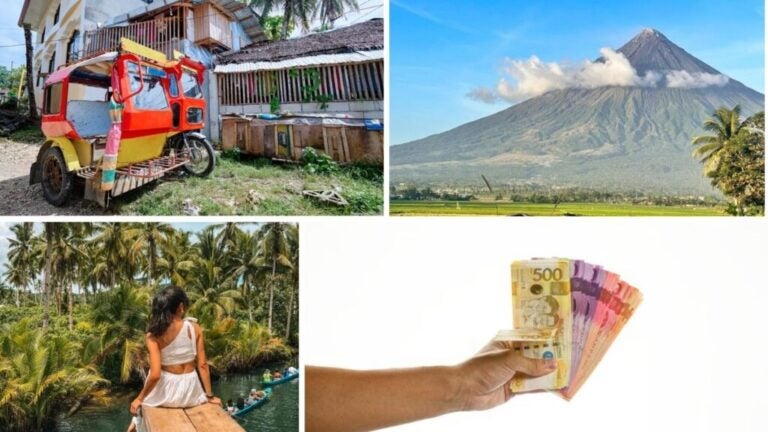
In summary, to calculate how much it costs to live in the Philippines, it depends on your food choices, transport, healthcare for emergencies and where you live.
However, on average, living comfortably in the Philippines means spending $700-1,200 (€598 – €1,024).
Frequently asked questions about the cost of living in the Philippines
The Philippine Peso is used, although in some tourist areas you can also pay in dollars and euros. However, it’s recommended to use the local currency for a better exchange rate.
Filipino is spoken in the Philippines, but you can also speak English as it’s the second most used language by locals and for tourism.
Compared to other countries in the region, the Philippines allows access to housing, services and other needs at lower costs. So yes, it’s affordable.
Yes, cities are usually safe, although some areas may require extra caution.
Yes, major cities in the Philippines have improved infrastructure to welcome more digital nomads from around the world. They offer high-speed internet, coliving with sea views and affordable living costs.





 Language
Language 


















 No results found
No results found


